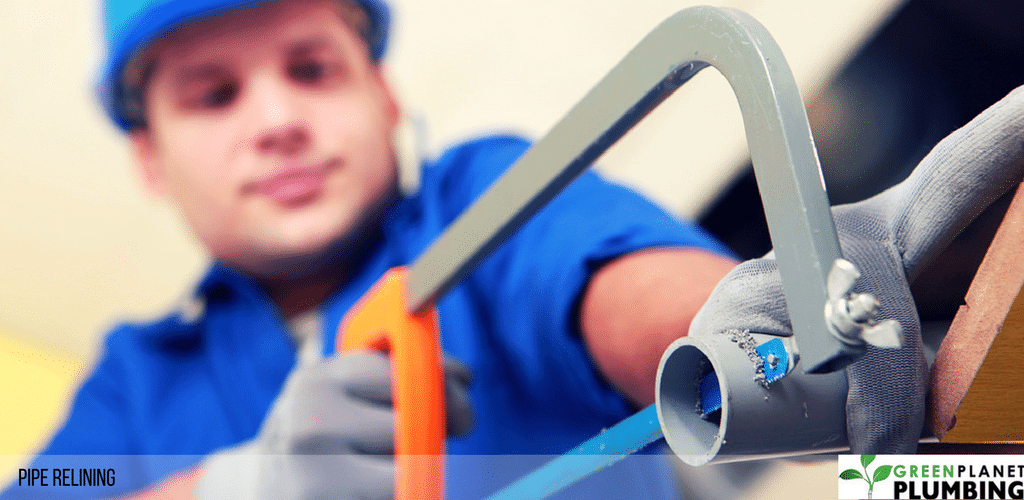
Pipe relining has been one of the most used procedures in repairing broken pipes for various industries. The pipe relining process works best because it utilises materials such as Epoxy, Polyester, Silicate, Vinyl Ester, and Resin that reinforce the pipes and make them stronger compared to the average PVC pipes. For this reason, Australian homes and businesses seek this type of service to make sure that pipes do not decay easily and last for many years. Engineering studies have found out that making use of pipe relining can make your pipes stay strong for up to 50 years or more.
Pipe relining works effectively because of the meticulous and step-by-step process it employs. Allow us to give you a brief background of the things involved in the pipe relining process.
Licensed plumbers check and investigate the site.
The first thing that licensed plumbers do after arriving at the location is to check the blocked or damaged pipes. Our plumbers use cameras to investigate the area. These cameras are small enough to fit in places that are narrow and tight. They can also explore variety of angles.
Plumbers get all the blockages out of the way.
The investigation will tell the plumbers if there are intrusions, damages, or blockages along the pipeline. If there are obstructions, we make use of a tool called a Robotic Cutter which enable us to cut any blockage made out of any material – be it steel, wood, or cement. Afterwards, a high-pressure water jetter is used to clear and clean the pipes and its walls to be certain that the bonds are all ready for the lining.
Plumbers conduct final check and have the linings prepared.
Before applying the linings on the pipes, licensed plumbers do one last check to make sure that everything is ready and that there are no missed blockages that will hinder the lining of pipes. If the final check has good results, they will proceed with measuring and estimating the amount of lining that the project would need.
The lining preparation.
After measuring the length and width of the pipes, the plumbers already have an idea in terms of the amount of substances that they will use and mix for the project. An Inversion Pipe Relining is used to produce a mixture of Epoxy, Polyester, Resin, and other important substances.
The glass-fibre reinforced plastic (GFRP) UV Pipe Lining is also mixed. It is the substance that makes it really effective and long-lasting. The mixture will then be poured to the liner, which will be used to roll the liquid material to the surface area of the pipes. The liner is repeatedly rolled around the pipes to make sure that the mixture is well distributed and attached to the area.
Inserting the pipe lining.
Inversion Pipe Relining makes use of a specialised inversion drum that blows the liner into the interior parts of the pipe. This device makes sure that the substances are well attached into the surface. Furthermore, the device will perform an inversion process to the pipe so that its other side can undergo a similar process ensuring its strength and durability. Other winches and tools are used in this process.
Plumbers proceed with cooling the resin coat.
After pouring the mixture to the interior regions of the pipe, the plumbers can then either wait for the resin to cool by itself, which can take a couple of hours, or can quicken the process by using water. 30%-70% of the waiting time to cool the resin coats can be reduced by this method.
Scraping off excess materials
When the resin has cooled down, the plumber’s next step is to remove the excess materials that surround the damaged pipes. Junctions and Inspection Pits are the common types of excess materials when doing pipe relining. Grinders are used to remove the inspection pits while Robotic Cutters are utilised to scrap off the junctions.
Pipe relining accomplished!
After scraping off the bits and pieces of the excess materials, one final inspection is done to make sure that all the damages have been repaired. A reliable plumber will show the finished work to the client and discuss how the process was done and even give tips on how to maintain the pipe.
Contact Green Planet Plumbing for all you plumbing needs in Newcastle, Lake Macquarie, and Hunter Valley
Pipe relining has been used by many companies and households because of the benefits if brings. Call us at any time you encounter pipe problems and will be more than happy to discuss the available solutions we have for you. Green Planet Plumbing is on-call 24 hours a day, 7 days a week. Call or email today!

